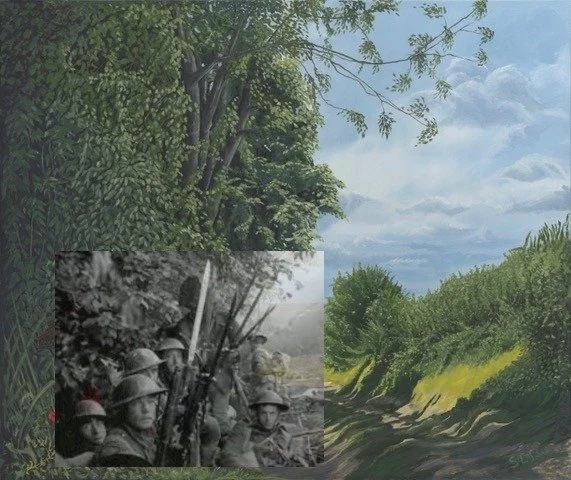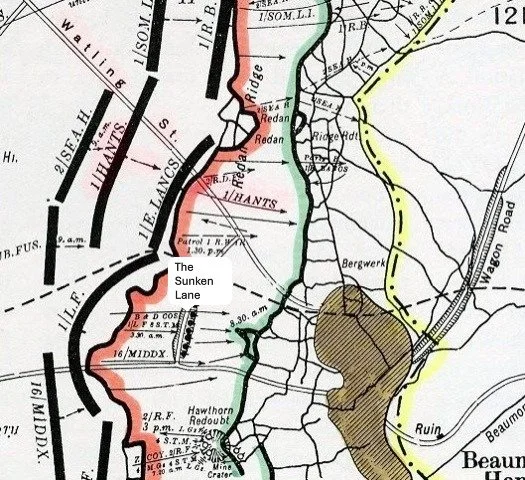Painting of The Sunken Lane overlaid with Malins’ film of the Lancashire Fusiliers (Image IWM)
Malins’ film of Lancashire Fusiliers waiting in the Sunken Lane (Image IWM)
Geoffrey Malins’ film of the Lancashire Fusiliers in the Sunken Lane is one of the most iconic from the First World War.
The Lancashire Fusiliers crawled through a tunnel to get to the “the Sunken Lane” an advanced position between British and German lines. Malins followed them and took this film just before they attacked. You can see the apprehension in their faces - many of these men were veterans of the Gallipoli campaign. Within an hour most of the men in this photo were killed or wounded. Of the 27 officers and 1,002 men of the first battalion that went into action on 1st July, only 16 officers and 304 men remained at the end of the day.
The painting (oil on canvas-panel) shows the Sunken Lane as it looked in the summer of 2024.
“As I sat down to sketch and listened to the birds singing and the summer breeze rustling the leaves, it seemed difficult to believe that in the past this place could have seen so much violence”
Simon Reeves
Map showing troop positions on the first day of the battle of the Somme 1916 (British front line shown in red, German front line is green)
About Malins
Geoffrey Malins was commissioned to capture film and photographs of the war. In 1916 he was attached to the British Army on the first day of the battle of the Somme. He gathered many hours of footage which was edited into a 77 minute documentary shown in cinemas back home.
The film was controversial in that it showed images of dead soldiers and Malins was unsure how the public would react. He decided to keep the images in as ‘it is only a very mild touch of what is happening day after day, week after week, on the bloody plains of France and Belgium…’. The public evidently saw it as their duty to view the film, with over 20 million viewings in the following months.
The work was dangerous and Malins was eventually invalided away from battle, having been wounded twice, deafened and gassed. He was awarded an OBE in June 1918 in recognition of his work as official photographer ‘in circumstances of great difficulty and danger’.


